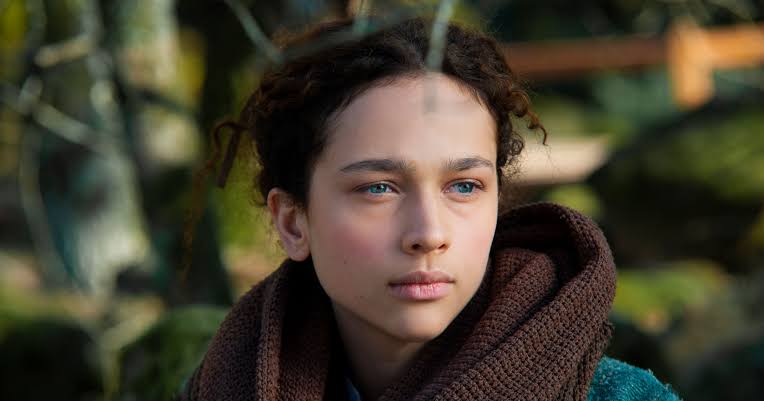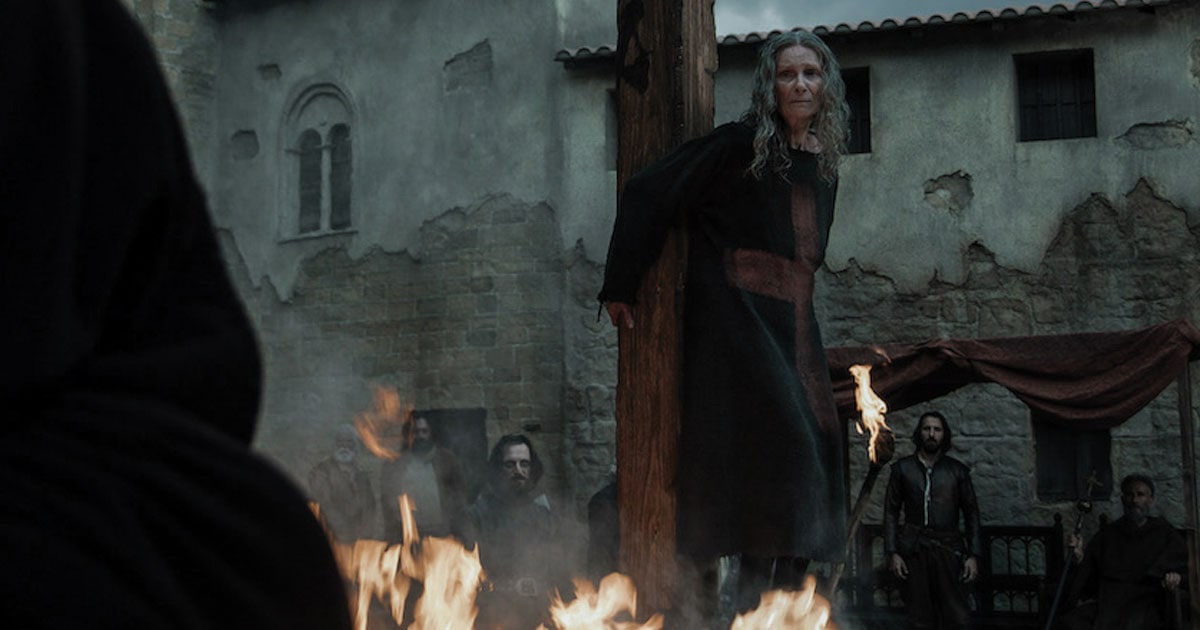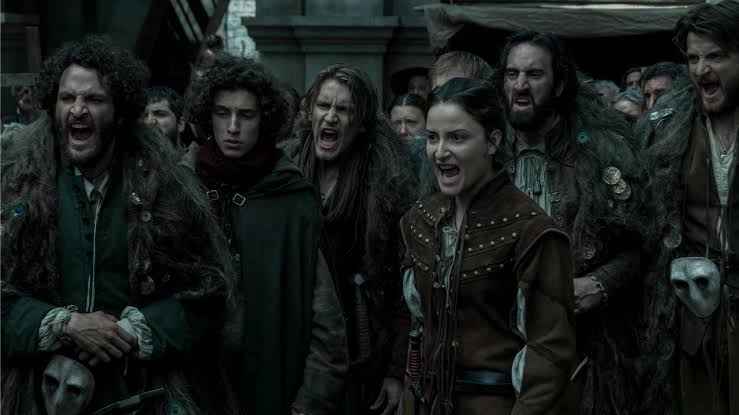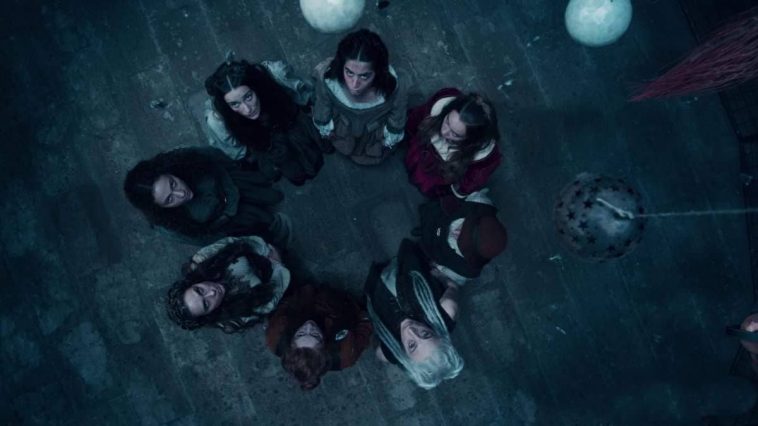Netflix’s ‘Luna Nera’ is a young adult drama that uses the premise of witch trials to tell a compelling story. At the centre of it is a young girl whose life is upturned when she discovers that she is a witch. As the whole town turns against her, she struggles to come to terms with her truth, figuring out a way to move on with her life.
The show depicts the barbarity of a society that doesn’t hesitate to burn women alive. While such acts of cruelty disgust us, we also wonder about the time when such things did happen. The witch trials are no secret, and with the historical setting of ‘Luna Nera,’ we are bound to ask: is this story real? Let’s find out.
What is Luna Nera About?

‘Luna Nera’ is set in the town of Serra in the 17th century. Ade is a teenager who works as a midwife with her grandmother. One day, she foretells the death of a baby even before it is born. This turns the people against them. They are both branded as witches and hunted down. While the grandmother is executed, Ade runs away and discovers a group of witches living in the forest in secrecy. She comes to know more about her heritage and what it means to be a witch.
Luna Nera: An Adaptation of Tiziana Triana’s Novel
No, ‘Luna Nera’ is not based on a true story. It is the adaptation of the first book, Luna Nera, in the series of young adult novels, The Lost Cities, written by Tiziana Triana. The decision to turn the books into a TV series was made quite early, and reportedly, production had started even before the book hit the stands. The Lost Cities is supposed to be a trilogy, which means that we can expect more seasons of the show.
The Inspiration Behind Luna Nera

Even though ‘Luna Nera’ is not based on someone’s true story, it does take inspiration from the very real incidents that took place in Italy. The series follows the story of the women who are persecuted by the town because they are labeled as witches. In the show, there is a truth behind the suspicions of the townsfolk, but the same can’t be said for the real witch trials that took place not just in Italy, but all over Europe, as well as, in America.
When we think of women being burned on stakes, we are taken back to what looks like the Dark Ages. However, these practices not only continued but also peaked during the 17th century, which is marked in our history books as the era of Enlightenment. This was also the time when famine and disease were at their worst, and people needed some explanation for this bad fortune. Witches proved to be excellent scapegoats. It was easy to create mass hysteria against them due to the highly religious nature and lack of scientific reasoning in people.
Thousands of women, with the total number easily surpassing 50,000, were executed on the grounds of their suspected indulgence in witchcraft. The support of the Catholic Church strengthened the audacity of the people to such an extent that once someone pointed out a woman as a witch, there would be no proper inquiry into the matter. She would be thrown in prison and would have to wait for her execution day while going through different kinds of torture.
Despite it being an abhorrent crime and quite a common one in those times, no proper laws were ever crafted to ensure a legal system for the accused. On top of that, once it got imbued with misogyny, they had free rein to capture or arrest any woman, and there was no one stopping them from committing heinous acts in the name of punishment. In this matter, Northern Italy is considered to have the worst history of all. There are towns like Triora where the butchery knew no bounds.
One of the most well-known cases of witch trials tells the story of Bertoletti Toldini in 1716. The woman was 60 years old when put on trial. Eight days after the arrest, her head was chopped off in public. A similar, and often worse, fate awaited women like her.
The Lore of the Benandanti

In ‘Luna Nera’, the worst enemies of the witches are the hunters who call themselves the Benandante. These are regular humans who have banded together due to the vendetta against the witches who have done them wrong. In reality, their situation was much more complicated than the one presented in the TV show.
The Benandanti, from the Friuli region, were not just any witch hunters. They claimed to have special powers as well. They considered themselves the opposite of witches. They were the good forces of nature who were to protect the people from the evil forces, i.e., witches.
The Benandanti lore dictates that they were capable of astral projections or inhabiting the body of some animal, and it was in this form that they battled witches. They also used their powers for things like healing, saving crops, etc. While witches were mostly female, the Benandanti were both men and women. It is also believed that the ones born as the Benandanti had birthmarks that separated them from normal people.
While they used their powers to battle witches, the simple fact that they too had powers similar to their adversaries, put them under suspicion as well. After some time, it became difficult to separate the wheat from the chaff, and they too had to face persecution, just like the witches.
Read More: Luna Nera Ending, Explained


You must be logged in to post a comment.